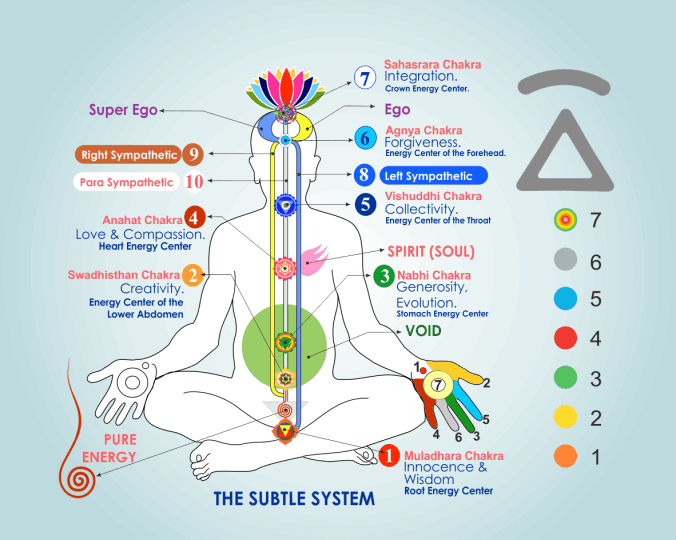 Kundalini is the power of pure desire within us, a motherly and soothing spiritual
energy which lies dormant at the base of the spine in the sacrum bone (the ancient civilizations knew that in this bone resides a sacred energy).
Kundalini is the power of pure desire within us, a motherly and soothing spiritual
energy which lies dormant at the base of the spine in the sacrum bone (the ancient civilizations knew that in this bone resides a sacred energy).
Self realisation is the awakening of the Kundalini through the central channel, piercing through the six chakras above the sacrum bone and emerging at the top of the head (fontanel bone area) as a gentle "fountain"
of coolness.
The word fontanel itself means "little fountain" which shows again the ancient knowledge about this phenomenon of Self realisation.
Self realisation has always been the ultimate goal of all religions and spiritual traditions of the world, but was extremely difficult to attain in the past. It has now become a mass phenomenon achieved effortlessly through Sahaja Yoga, which is Shri
Mataji's invaluable gift to humanity.
In Shri Mataji's own words, "Self realisation is the first encounter with Reality". "We have the Mother within ourselves, in our hearts, and if She is awakened, She is going to look after us. She is going to give all the protection that is needed. And
there is nothing to be frightened of."
"Kundalini cures you, she improves you, she bestows all the blissful things upon you. She takes you away from the worries at the grosser level", says -H.H. Shri Mataji Nirmala Devi.
Explanation about Kundalini in hindi by
H.H. Shri Mataji Nirmala Devi
Explanation about Kundalini in English by
H.H. Shri Mataji Nirmala Devi
The Kundalini is like a rope with a thousand strands; when we first get our Self-realisation, only one or two strands find their way through the chakras and reach the sahastrara (the top chakra). However, with regular meditation, gradually more strands
of the Kundalini rise and connects us to the divine power. The experience of meditation becomes more profound and blissful over time. The Kundalini was described by Indian saints such as Adi Shankaracharya (c 600
a.d.), Kabir (c 1500 a.d.) and Jnanadeva (c 1200 a.d.) among others.
References to Kundalini
The Kundalini is like a rope with a thousand strands; when we first get our Self-realisation, only one or two strands find their way through the chakras and reach the sahastrara (the top chakra). However, with regular meditation, gradually more strands
of the Kundalini rise and connects us to the divine power. The experience of meditation becomes more profound and blissful over time. The Kundalini was described by Indian saints such as Adi Shankaracharya (c 600
a.d.), Kabir (c 1500 a.d.) and Jnanadeva (c 1200 a.d.) amongst others.
This movement of Kundalini is felt by the presence of a cool or, in the case of imbalance, a warm breeze across the palms of hands or the soles of feet. Such a phenomenon can be seen to be described in a diverse array of scripture like:-
• Aquarian Gospel of Christ, ch. 44, v19, ch. 161, v35, ch. 162, v4;
• Gyaneshwari, ch.6;
• Ezekiel, ch. 37, vs. 5-6:
• Old Testament; John, ch. 14 vs. 15- 17 & 25: New Testament;
• Quran, sura 24, vs. 24; sura 35, vs. 9; sura 36, vs. 64;
• Descieux, 1998iii